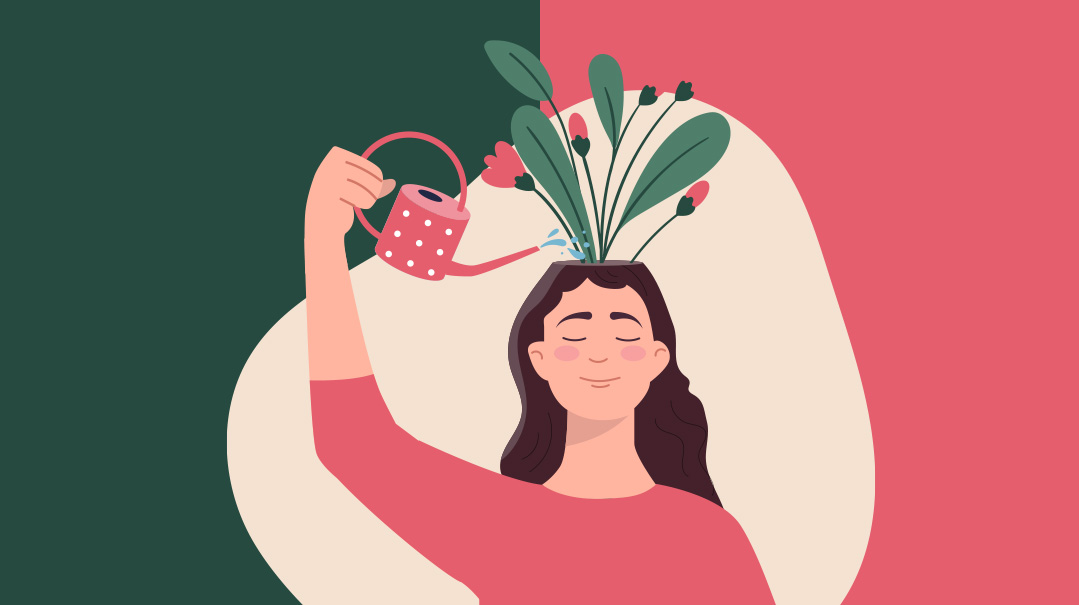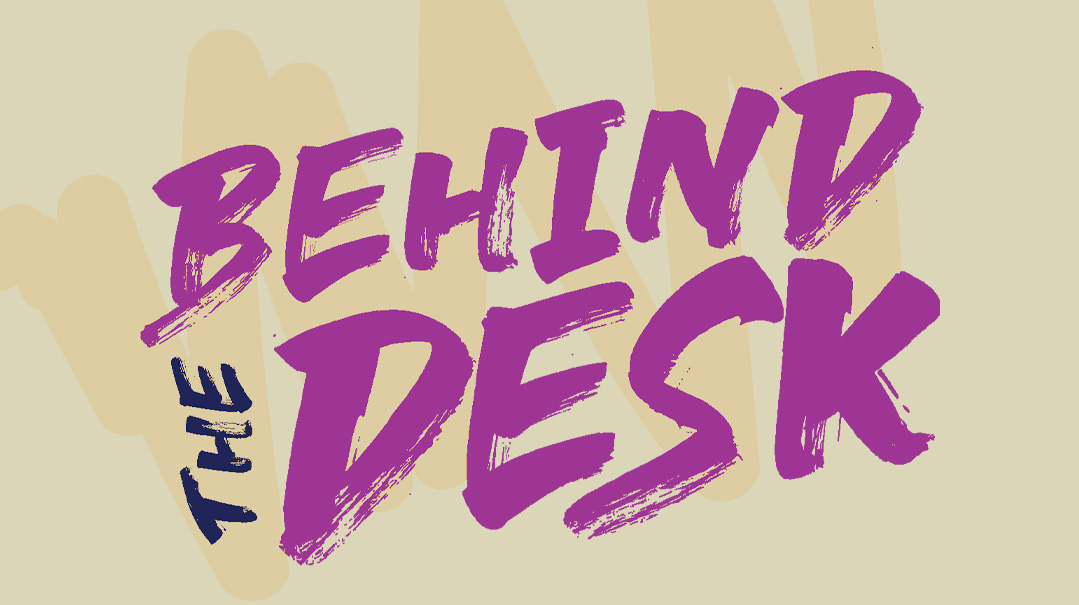Dare to Be Different
| December 25, 2019How well do YOU fit in?

Chavy’s mother hung up the phone with a confused frown. “That was Mrs. Green,” she said to Chavy. “Your classmate Deena’s mother. She was telling me that Deena has no friends in the class? Is that true?”
Chavy grimaced. “Oh, Ma, I feel really bad, but it’s true. It’s not like we don’t try, it’s just really difficult having Deena around. She makes these really hurtful comments, like when she said in front of the whole class that Shira’s dumb. She says weird things and interrupts in the middle of conversations. And, Ma, whenever there’s a change in schedule or a teacher does something differently than usual, like a surprise pop quiz, Deena literally falls apart! It’s really tough having with a classmate like that…”
Chavy’s mother looked thoughtful. “Hmm, that does sound tough. It sounds like there’s something that makes it impossible for Deena to fit in socially. Imagine how painful that must feel for her, knowing that she doesn’t have friends, and not knowing how to change that! Maybe she needs some help.”
“I never thought of it like that,” Chavy said, her eyes wide. “Poor Deena. But what can we do about it? It’s not our fault she’s like that.”
“Of course, it’s not you and your classmates’ fault — but maybe it’s not her fault either. And while I’m going to call her mother right back and suggest some things that could help Deena learn to integrate better, there are definitely ways that you and your classmates can help, too.”
It’s true; there are teenagers who have difficulty with social cues. There are teens who are smart, talented, and kind — but they don’t understand body language, they find changes or surprises very overwhelming, and they may respond inappropriately in social settings. You might even find them hurtful or rude. But they don’t mean to be.
Teen Pages reached out to Mrs. Mindy Rosenthal, M.S.-BCBA/LBA from Lakewood, New Jersey, and Mrs. Suri Reiss, BCBA/ LBA from Waterbury, Connecticut to learn more about what it’s like to live with ASD and other mild social disorders — and what we can do to make everyone feel comfortable, understood, and included.
What’s It All About?
ASD — Autistic Spectrum Disorder — is one of the social deficits some people struggle with. ASD is a neurological disorder, which means that the brain is wired differently, leading to struggles with interpreting social cues and acting appropriately in a social setting. The main areas affected, Suri Reiss says, are in behavior, social/emotional areas, and communication.
What does this mean practically? Well, like Deena’s classmate Chavy pointed out in the example above, people with ASD often seem very rigid, demanding that everything always stay the same. Suri explains, “It’s hard for a child with ASD to be flexible and easygoing about things. This can look like bad behavior: imagine a child insisting on the same foods every single day, or throwing a tantrum if their parent drives to school taking a different route than usual. But this is part of the disorder; these kids have a need for everything to stay the same.”
She gives the simple example of a sleepover at a friend’s house. If you are able to be spontaneous and enjoy the opportunity to have a good time with a friend, you’re lucky! For a teen with ASD, this is one situation that would cause them tremendous anxiety.
“Firstly, if it’s last minute, they have to ‘switch gears’ very quickly,” she explains. “Then they need to transition to a new setting and a new set of behaviors. Then they need to deal with different foods, a different bedroom and bathroom, and different textures of bedding.”
Yes — someone on the ASD spectrum can have sensory differences as well, and may be very sensitive to things that another person wouldn’t even notice.
“The food, smells and feelings will all be slightly or intensely different than what they are used to, and a child or teenager with ASD can have difficulty handling any one of those factors,” Suri says. “And this is only one example.”
Then there is the social aspect of the disorder. Mindy Rosenthal puts it succinctly: “Most people have a social filter. We may think something but not say it, for example, ‘Why are you so fat?’ These individuals don’t develop this filter naturally so they need to really work hard to cultivate it and might still make mistakes.”
Deena Green didn’t mean any harm when she said that her classmate Shira was dumb, she was just stating the facts as she saw them: Shira failed a test, which meant she was dumb. She didn’t realize that speaking that way could be so hurtful to Shira.
“Language is not only what you learn in school in English or language arts,” Suri says. “The technicalities of language are vast. The language we use is full of communication that actually has nothing to do with words at all!”
Think about a conversation you’ve had with your friends — how much of it is about the words themselves, and how much is about the facial expressions, the tone of voice, the hand gestures? These and other clues in the form of body language combine to tell us what a person actually means.
A child with ASD can be very bright, and have a high vocabulary. But, as Suri goes on to say, they could be missing the entire language of nonverbal cues. They wouldn’t be able to interpret a teacher’s facial expression or a friend’s raised eyebrows. They might not realize what is the correct time or place for different types of comments — for example, they might laugh in a serious or sad situation, or talk loudly in the library. They also have a hard time understanding jokes, since they’ll understand the words too literally.
Try this: say the following sentence aloud a few times, emphasizing a different word each time: Did you give him that? Did you give him that? Did you give him that? Did you give him that? Did you give him that? Did you hear how it sounded, and how the question turned out a little different with each emphasis? That’s great; you’re lucky to have an understanding of how tone and emphasis changes the meaning of a sentence. However, not everyone can hear the subtle differences, and that’s why someone with ASD can easily miss the point of a question.
“Often, they also have difficulty understanding that someone else’s thoughts, opinions, and viewpoints may be different from their own,” Mindy says. “It’s cute when a little kid assumes everyone’s favorite color is blue because it’s their favorite color. But when a teenager insists on playing only the games that they like and studying the way they want, it becomes annoying, not cute.”
Suri cautions that it’s important to remember that no two people with ASD are the same. Since it’s a spectrum disorder, every case is different and there’s a wide range of symptoms and difficulties. Many people with ASD are extremely high-functioning and can learn skills to help them adapt socially.
Social Struggles
Fact is, we enjoy spending time with people who can understand us. We want to have a back-and-forth conversation, easy communication, mutual understanding — as Suri describes it, our relationships are “give and take.” You talk while I listen, I talk while you listen, and that’s how we create a natural, easy, and enjoyable interaction.
“As we mentioned earlier, kids with social or communication weaknesses can have great difficulty connecting to another person, and taking in their perspective,” Suri says. “But being able to do that well is integral to having that natural back-and-forth/give-and-take with ease. If someone has a weakness in this area it makes it difficult to relate and create friendships with them.”
It may look like the classmate with ASD is monopolizing the conversation, ignoring someone, not listening or not caring how you feel. They may mistakenly say something odd or slightly rude or awkward. Or you reach out and they don’t reciprocate. That’s a big challenge for both parties. You may want to connect — but the classmate or neighbor with ASD doesn’t know how to do it quite right, and you may not know how to draw them in. That’s why Deena’s classmates began to simply leave her out — it was too confusing for them. They simply didn’t know how to relate to her and couldn’t understand why she didn’t follow the unwritten social rules they all knew instinctively.
What we have to remember is that a person with ASD can’t see what’s unwritten, or unspoken. They can’t pick up contextual cues like we do.
“When we schmooze, engage in friendly teasing, or make suggestions, we automatically gauge our friend’s reactions,” Mindy explains. “That’s how we know when they are hurt, when the teasing went too far, or when we should change the topic. When those with ASD (or other social-cognitive deficits) lack that perception, they inadvertently insult other people or make them feel uncomfortable.”
“Another thing that makes things hard for someone with ASD in a social setting is that things happen so fast,” Suri says. “People communicate fast, and you need to be socially on the ball to pick up the cues and respond appropriately. A person with ASD may have some of the skills, but they’re not as fluent or fast-paced. By the time they catch up and understand what’s going on, everyone around them is on to the next thing, and they are left behind.”
Social (Skills) Studies
“Most teens with ASD have been to different types of therapists and have probably made tremendous progress with daily living skills, social thinking, and flexibility,” Mindy says. “There are also many great self-help books for teens, for example, Socially Thinking for the Curiously Social Teen, by Michelle Garcia Winner.”
So how would a therapist help someone learn social skills? Is it a skill that can really be taught? There are many options, says Suri. There’s breaking down social concepts into concrete language and teaching that. There’s even a curriculum, created by Winner, that breaks down social concepts that most of us just understand instinctively.
“Think of eye contact,” Suri points out. “Many people with ASD have difficulty with making eye contact. Winner calls eye contact, ‘Thinking with your eyes,’ and teaches that what we look at is what we are thinking about. This is not something that a typically developing child or adult would need to learn.” But it could be a game-changer for a teen with ASD.
Other ways of learning new skills include video-modeling, which is watching videos of others demonstrating a skill or a having a successful social interaction, or self-video modeling, in which the child themselves is videoed doing something that is hard for them to do fluently. The video can then be edited and become a powerful tool to help learn new skills.
A therapist may also lead groups in which children can practice skills with others who are struggling similarly. This way, children or teens with social difficulties can learn and practice social skills in real time with real peers, role-play scenarios, or create and read a social story.
“There are so many skills involved in playing with others!” Suri describes. “Sharing, using imagination, turn-taking, collaborating, teamwork, multitasking, referencing others, giving in, compromising, commenting, noticing others work, engaging with others, shifting attention back and forth, understanding and expressing language, acting things out and problem solving. Learning to play properly is actually one of the best ways to strengthen the many skills that are needed to succeed socially.”
Mindy reminds us that despite very hard work, some social skills might never come naturally to a person with ASD or a similar deficit. “I have a friend with a physical disability,” she shares. “With tremendous hard work, extensive therapies and treatments, and of course abundant siyata d’Shmaya, she has learned how to walk. We are so happy for her, and proud of the effort that it took, even though she walks with a limp and crutches. ASD and other nonverbal learning disabilities (NVLD) are hidden disabilities. It’s important that we know about them so that we can treat people with the respect and admiration they deserve for the hard work they put in daily to be socially appropriate, even if it comes along with a “limp,” and is not perfect.”
And she adds a message for all teens: “Growing up is complicated! Navigating new or complex relationships, settings, and dynamics is confusing. Typically developing teens can also benefit from learning new skills, working with a qualified mentor or therapist, or talking things over with a competent adult.”
You may not know anybody who has ASD, but maybe you have a classmate or schoolmate (or maybe it’s you!) who struggles with a slight form of social awkwardness, stage fright, shyness, or just regular friendship ups and downs. There are so many practical tools that can be taught to “normal” teens and even adults to enhance their quality of life. These include public speaking, assertiveness, initiating or deepening relationships, conversation skills, and even interview skills when applicable. Take advantage of the resources out there — it’s worth it!
What can YOU do?
A child with ASD may work on many things with a therapist, but the purpose of it all is for them to be able to utilize these skills in the “real world” — like in school and camp settings. So, the biggest favor you can do for them, Suri says, is to be available and willing to help them practice their social skills in real time. Playing, schmoozing, doing activities, projects, and so on, in real life, is something no therapist can do!
Child psychologist, Dr. Ross Greene is quoted as saying, “Children do well if they can.” That means, as Suri says, “A child who is not doing well, it is usually because they lack the skills rather than motivation. They want to succeed; they just don’t know how! When you encounter someone who has difficulties in social areas or communication or has certain difficult behavior patterns, realize that they would do better if they could.”
“Unlike those on the ASD spectrum, typically developing teens have the ability to take someone’s intentions into account,” Mindy says. “Chavy and her classmates can understand that Deena did not mean to hurt or insult them. They also have an easier time with empathy, so instead of getting insulted embarrassed or annoyed, a teen can think, I feel so bad for her that she doesn’t even realize she hurt my feelings!”
“Once you realize all this,” Suri continues. “You can help people with ASD in so many ways. For example, simply slowing down and noticing who is getting left behind. Be obvious about your intentions so they can catch on. Perhaps they’re struggling to join in without the skill set to do it naturally and quickly like you do!”
“It is important to be very direct, albeit in a respectful way,” Mindy says, “since those with ASD often won’t get hints or implied meaning. So instead of shrugging someone off when you are not interested in studying with them, or rolling your eyes at a game suggestion that is too babyish; you need to be clear. Say something like, ‘For this test I can’t study with you but maybe for a different test” or ‘I know you like Bananagrams but I don’t like to play it — if you want, we can look at old yearbooks instead.’”
“Invite them to join you using words — ‘Come, we’re going now” — instead of relying on body language or contextual cues,” Suri concludes. “You and your friends might understand this naturally, but your struggling classmate doesn’t.”
Final Message
What messages do Mindy and Suri have for our readers?
“The term ‘normal’ means, like everyone else,” Mindy says. “No two people are alike, so really, no one is ‘normal’ — and no one should be! Everyone has their own unique tafkid with their individual struggles and difficulties to work on. And I wish all of them hatzlachah in working through their challenges.”
Suri adds, “ASD is such a big umbrella term! If someone is struggling with social skills or communication or rigidities, it doesn’t mean they definitely have ASD. Maybe, maybe not; honestly, it doesn’t really matter. The important thing for us is to see the person for their positive strengths and focus on using your strengths to help them with their weaknesses.”
“There are many different types of smarts and strengths. Some teens are gifted in music, in art, in English, in math, in science, in drama, in understanding other people and being empathetic. Some people have great language skills or strong charisma. We are all born with strengths and weaknesses.
“If you are socially smart, you understand naturally how to interact and understand people. Be grateful, and use your natural gifts to help those who struggle in that area by pushing yourself to create opportunities for them to join in. It’s not easy to do it in our fast-paced and sometimes competitive social surroundings and it truly takes social finesse! Yet even one successful social interaction for someone who struggles is a real victory for them. It makes the next time easier and leads them to try harder and not give up. You can make a world of a difference to someone who struggles in this area!”
“How’s it going with your classmate Deena?” Chavy’s mother asked her, a couple of months later.
“Oh, it’s so much better now!” Chavy exclaimed. “Our mechaneches explained a bit about what Deena struggles with, and now we get why she doesn’t join in naturally. We’re all trying to be more inclusive and explain things that she might not pick up. The other day, we were working on a project in groups, and I invited Deena to ours. At first she was telling us all to do things differently, but then I explained that people feel bad when she chooses everything, so we’re going to take turns, and then we demonstrated it by going around and each choosing one part of the project to be in charge of. That really worked!”
“Well done,” Chavy’s mother complimented her. “You must have felt good, and I’m sure Deena did, too!”
Mindy teaches social skills, executive function, and other “stuff” to incredible children, teens, and their parents. She is also the lucky director of student services at Ilan high school. She can be reached for professional development, workshops and consultations through Teen Pages.
Suri works as behavior analyst in Monsey, New York, creating and implementing skill acquisition programs and behavior plans for children on the autism spectrum. She can be reached for consultations through Teen Pages.
SIDEBAR 1:
A Mother’s Message
By B.K.
200 Shabbosim
50 weeks a year
4 years of high school
Yes, I repeat:
200 Shabbosim.
That nobody called my daughter to get together,
200 Shabbosim that I watched nobody knock on the door.
200 Shabbosim that we met groups of girls who
Greeted us so warmly on the streets as they were all heading over to someone’s house and waved as they kept on going, never inviting her to join.
For someone’s birthday celebration
To study together for a Navi test
To just hang out.
The girl in the grade who has special needs and struggles to just blend in.
The girl in the class who nobody includes in color war preps or yearbook committees.
The girl in the class who knows enough to know she’s different.
Has no idea how to get herself included. Doesn’t get the sarcasm, the inside jokes, the half sentences.
What she does get is that in her heart she can’t understand why everyone isn’t her best friend. Nobody is anything but really nice — but it never goes beyond the surface.
She also gets that since nobody is interested in spending more than a few minutes making chitchat, she finds that her best companions are on a screen, in books, and in videos.
These characters accept her unconditionally. She never feels any rejection. She never feels less or small.
This beautiful girl knows other girls have friends.
Friends who confide in each other, who make plans to get together, who discuss their camp choices, but never with her.
As the Mom, I can’t do more than pretend that this is acceptable. As the Mom after years of bearing the pain, I would love to think of a way to promote an awareness.
The reality is there is an awareness but it’s just easier to ignore.
No, she will never go off the derech.
Therefore, she’s really not a societal issue. Much more pressing issues to be addressed.
The high-functioning child with special needs, falling through the cracks. Doesn’t really fit in anywhere.
Not fully welcomed anyplace.
Such a shame that nobody deemed her worthy enough to befriend and perhaps have benefitted so much from the relationship.
Such a shame that she doesn’t know what she has missed to have never had a friend who thought she was worth the effort.
High school is coming to an end — everyone is off to seminary and then hopefully the natural course of events.
What about my child?
The count begins anew.
The next set of 200 Shabbosim (or is it thousands of Shabbosim?) trying so hard to convince ourselves it’s fine.
Problem is, fine is just not good enough.
SIDEBAR 2:
Top Tips — How to Include a Socially-Struggling Classmate
- Be Aware: Now that you’ve read this article, you’re on your way!
- No Offense: Remember that they don’t mean to be hurtful.
- Clear Communication: Say things straight out — but nicely!
- Slow Down: Don’t leave them behind as you rush on in a group interaction.
- Notice: What social skills do you use automatically? How can you simplify the social environment for those who don’t understand it like you do?
- Be There: Most importantly, be there for them as they practice navigating the social world — realize it’s not natural and they are often really doing their best to learn new things!
And remember, Suri says, “Helping someone who struggles experience the joy in friendship and social interaction is what will motivate her to work at strengthening her social skills even more. It’s the ultimate!”
(Originally featured in Teen Pages, Issue 791)
Oops! We could not locate your form.







